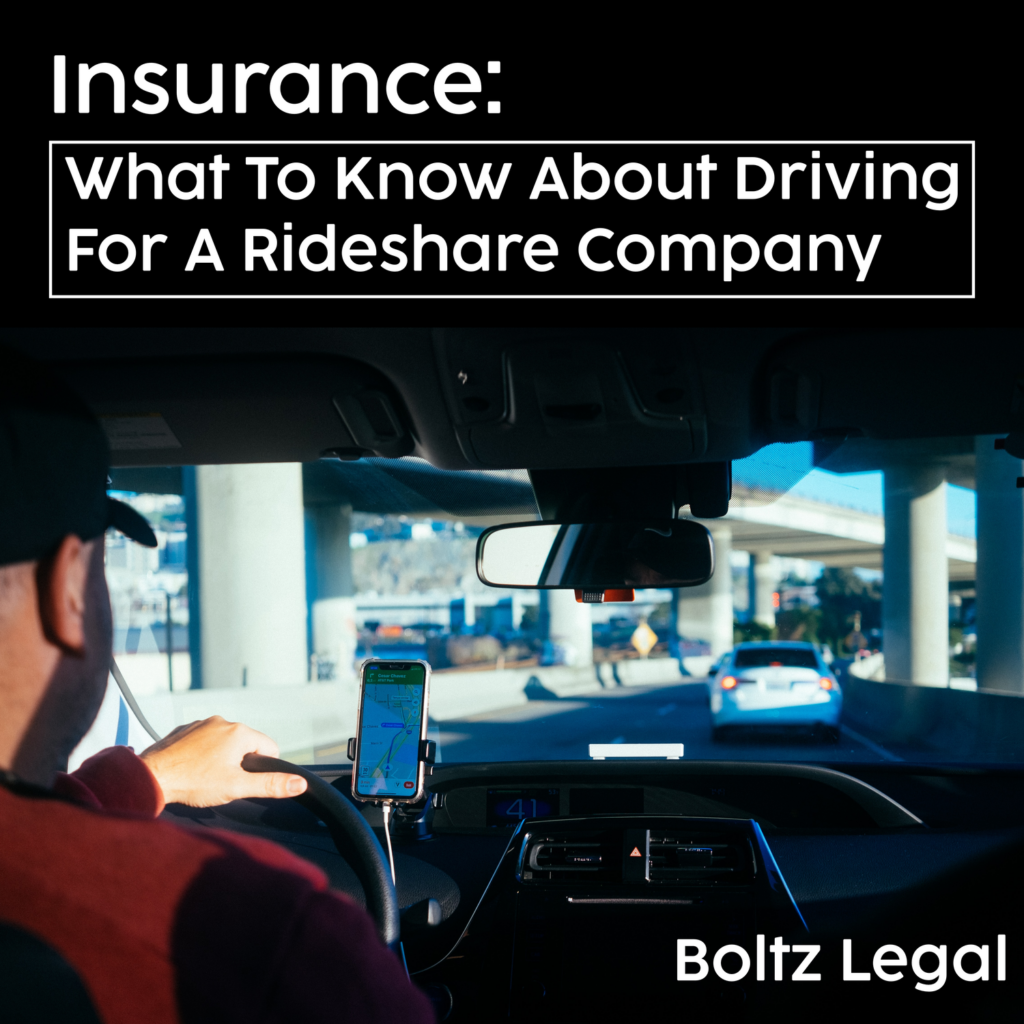Ridesharing services, like the Uber and Lyft apps, have become wildly popular in recent years. Not only are they favored by passengers for easy-to-find lifts, but they’re also attractive for people who are looking for work and to make money. Since many rideshare drivers use their own cars to provide services, they may assume that any personal injury sustained is covered under their standard auto insurance. However, that’s not exactly the case when it comes to working for rideshare companies.
Whether you’re currently a rideshare driver or looking to start soon, read on for more about what you need to know when it comes to insurance.
Elements of car insurance
As a driver of a personal car, you very likely have an auto insurance policy in place. Typical insurance policies cover property damage and personal injury protection for you. Some also cover the other car if you are involved in an accident with somebody else. When you find yourself in an accident, you file a claim with your insurance company, they conduct an investigation and typically cover the cost of repair or medical costs if needed. If you decide to start driving for a rideshare company, there are some things you should know about personal injury protection.
Rideshare companies don’t provide full protection at all times
It’s key to know that rideshare companies do not provide personal injury protection coverage at all times, and most personal policies exclude coverage if you are working as a rideshare driver. This means people who wish to drive for a rideshare company must purchase a special rider insurance on their personal policy to be covered for personal injury protection the entire time they’re driving for the company.
Rideshare insurance
Under Florida law, rideshare drivers are required to have insurance whenever they are conducting their services and the rideshare app is on. With rideshare policies, there are different periods of coverage depending on where the driver is on the trip. This affects the coverage levels.
Periods of coverage
With rideshare insurance, the coverage varies based on the stages the driver is in and helps fill in gaps left by typical auto insurance when it comes to ridesharing. For example, Period 0 means the driver is simply driving their car and the rideshare app is off. At Period 1, limited coverage kicks in as the driver logs onto the app.
Period 2 is when a ride is accepted and the driver is on the way to pick up the passenger, and Period 3 means the driver has picked up the passenger and is driving them to their destination. Period 2 and 3 are when typically the driver receives the full commercial insurance provided by the rideshare company. Despite this, it’s a good idea to add rideshare insurance to your regular policy if your insurer offers it so you have full coverage the whole time.
Explore more about specific rideshare company insurance:
For more information on Uber’s policies, visit here.
For more information on Lyft’s policies, visit here.

